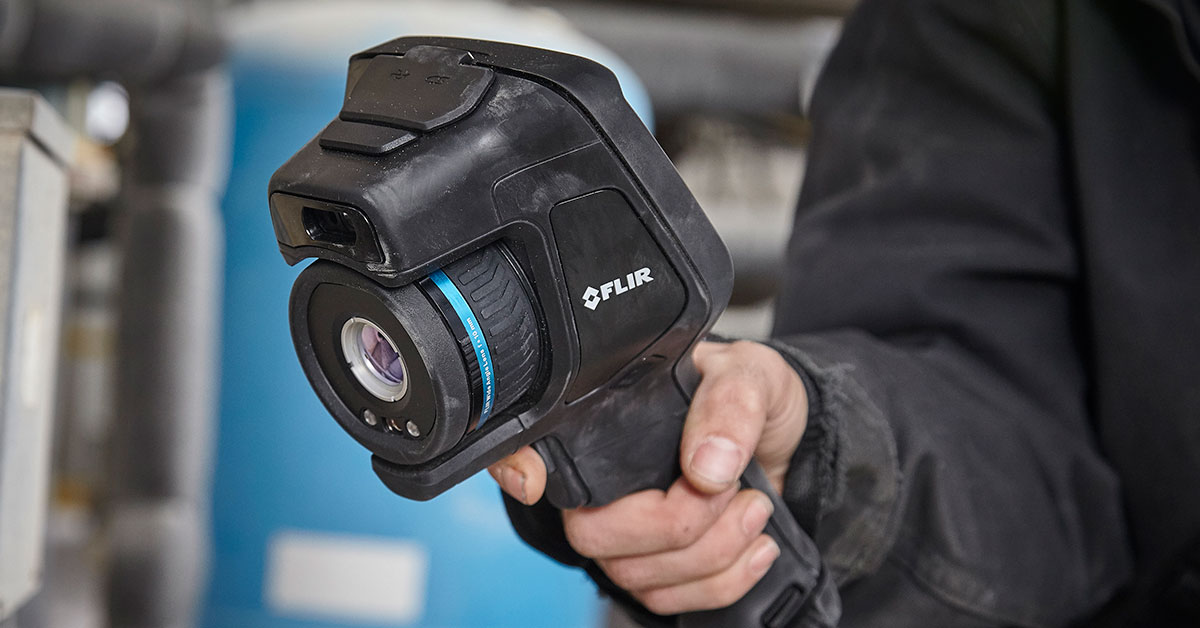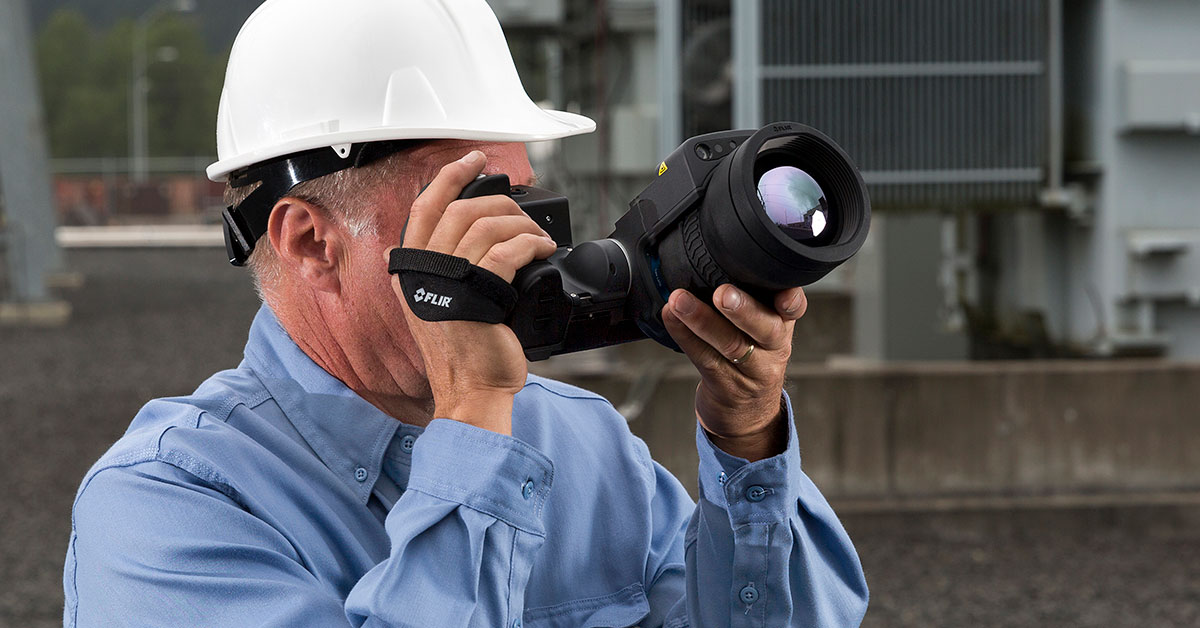What Is the Right Handheld Thermal Camera for You?

The critical factors in determining the most appropriate thermal camera to keep in the tool bag often come down to the camera’s intended use and how often one plans to use it. After all, FLIR thermal cameras for residential, commercial, and industrial use can range in price from just a few hundred US dollars to high five figures with significant leaps in performance in between. The right handheld thermal camera will provide the features and capabilities the user needs at a price they can afford.
As there are dozens of specifications one can compare between cameras, it’s crucial to understand which can be the most helpful to check when evaluating the various thermal camera series offered by FLIR.
Here are four of the most important factors to consider:
- Resolution: Generally, the lower the cost of a camera, the lower the resolution. Even with a lower resolution, these cameras can be effective at close range to examine easily accessible targets, but will struggle to provide effective visual detail necessary to make meaningful decisions for very small targets or those many meters away.
- Focus: Lower-end cameras typically have a fixed focus that requires the user to move the camera in order to achieve a crisp image. This can become an issue if the job requires precise measurements. An out-of-focus image means a less accurate temperature measurement, regardless of a given camera’s true thermal resolution.
- Field of View (FOV): For work close-up, a lens with a wide angle FOV (45° or higher) will be more useful than a telephoto lens (typically 12° or 6°), which is primarily for longer distance work. For those who require both near and far inspection capabilities, a device with interchangeable lenses provides the greatest utility.
- Battery: The battery standby time, the expected battery life from continuous usage, and the option to swap out batteries quickly all need to be factored into a decision. For those who only require quick use of a thermal camera once every few weeks or so, standby time will take precedence. Conversely, those who are expecting a camera to be used all day may want long battery life and the ability to easily swap out batteries to complete the work uninterrupted.
With this in mind, below are three handheld thermal camera models with price points and features that can serve as a good starting point for determining the most appropriate camera for one’s needs: the FLIR E96, the FLIR E8 Pro, and the FLIR C5.

The E96 Offers the Best of All Worlds
As resolution can often play the biggest role in the price of a given camera, it’s important to think about the type of resolution required, and beyond that, the ability to focus the camera to inspect points of interest both near and far.
The FLIR E96 offers the best resolution for a handheld, pistol-grip thermal camera. It’s also the first 640 × 480 true thermal resolution camera available at $13,549 USD in this form factor. After all, more pixels mean more detail, providing the ability to get a more accurate temperature measurements every time for all types of targets.
To take full advantage of that resolution, the E96 offers a range of interchangeable lenses that can be autocalibrated and provide dynamic focusing options. Thanks to three optional FLIR AutoCalTM lenses, ranging from telephoto (14°) to wide angle (42°), the camera offers the most complete coverage for inspections near and far.
Furthermore, the E96 features a high capacity yet interchangeable battery system to provide the most flexibility for all-day use.
An Ex-Series Camera for Close-Up Use at an Affordable Price: The FLIR E8 Pro
With a similar pistol-grip form factor as the E96, the FLIR E8 Pro offers a nice mix of features but at just a fraction of the cost: $3,499 USD. That reduced price point also comes with reduced resolution, with a 320 × 240 true thermal resolution detector, and lacks the ability to adjust the focus. The fixed 45° lens offers an appropriate field of view for closer range inspection, but can’t be changed out for a different lens. However, the E8 Pro does give the user the ability to swap batteries for external charging, a necessity for all day use, while still offering a very high temperature range for a variety of high-temperature inspections from -20°C to 550°C (-4°F to 1022°F).
The limitations of E8 make this device a good choice for those requiring a quality, rugged handheld camera but don’t need to conduct long range inspections where a narrower field of view and the ability to adjust focus are necessities.

The C5: The Best Handheld Thermal Camera Under $1,000 USD
At a fraction of the cost of the E8 and E96, the FLIR C5 is available for $599 USD. Featuring a true thermal resolution of 160 × 120, this device features a compact, point-and-shoot style form factor with a touchscreen that will work with gloves while easily fitting into pockets.
Despite its smaller size, the device is still robust enough to handle drops from two meters and protects its components from the dust and grime found on a typical job site.
For those who currently use a FLIR ONE Pro, the C5 is a great upgrade as the battery lasts significantly longer (4 hours on one charge), and has approximately 30 days of standby time for quick, but irregular use at close range, all within a rugged casing and with Wi-Fi connectivity.
Still not sure what is the right camera? Go deeper with additional specifications for consideration with Thermal Camera Specs You Should Know Before Buying.


